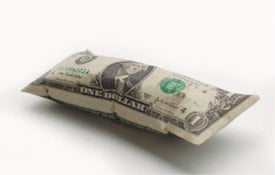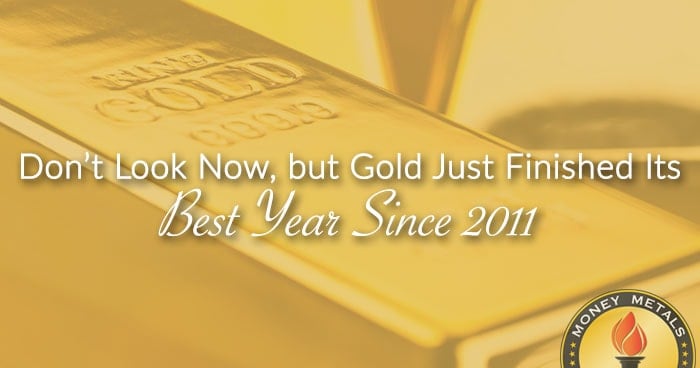Metals investors may have missed it given the gloomy sentiment that plagued markets for much of 2017, but gold just finished its best year since 2011.
Perhaps in a year like the one just passed, 13% gains are simply not inspiring. U.S. stocks finished about 25% higher for the year, and crypto-currencies including Bitcoin left all other asset classes in the dust. Bitcoin gained roughly 1,400%.
Die-hard gold bugs enter 2018 waiting for crypto-bugs and stock bulls to see the value of precious metals. Fortunately, precious metals have served reliably both as an inflation hedge and as a safe haven for most of recorded history. It looks less and less probable investors will get through another 12 months while ignoring both inflation and market risk simultaneously.
While other markets were finishing 2017 strong, the U.S. dollar ended the year with a whimper. The dollar fell 10%, its worst performance in more than a decade.
That weakness has yet to manifest itself as price inflation in consumer goods and services. It has instead shown up in asset prices.
Consumers have yet to feel their dollars getting weaker, which may explain much about why a traditional inflation hedge like gold isn’t getting a lot of attention. That may change in the months ahead, particularly if President Donald Trump can add his debt-financed infrastructure spending program to the tax cuts recently passed. Both initiatives represent fiscal stimulus for Main Street and a shift from Wall Street-oriented monetary policy including Quantitative Easing.
Fiscal stimulus programs should contribute to more weakness in the dollar, as deficits and borrowing increase. Yes, the Republican-led Congress could insist on spending reductions elsewhere to compensate for tax reduction and infrastructure spending, but only the most naive would consider that a genuine likelihood.

If the dollar loses another 10% in the year ahead, metals ought to be significant beneficiaries – even if most aren’t paying attention to that possibility.
The recent strength in precious metals may be signaling that price inflation is on the way.
The Federal Reserve has been raising the Fed funds rate for more than two years, thus far with very little impact on bond yields and interest rates on consumer loans. When dealing with markets as centrally planned as ours are, anything is possible… in the short term.
Yet, in our view, the most likely alternative to inflation as a driving force in markets over the coming months is asset deflation. If investors aren’t talking about rip-roaring asset markets at this time next year, they may be talking about bubbles popping instead. There are certainly several bubbly markets and a near-total disregard for risk. That is a potent combination.
Either way, don’t expect the metals markets to go unnoticed in 2018.

About the Author:
Clint Siegner is a Director at Money Metals Exchange, a precious metals dealer recently named "Best in the USA" by an independent global ratings group. A graduate of Linfield College in Oregon, Siegner puts his experience in business management along with his passion for personal liberty, limited government, and honest money into the development of Money Metals' brand and reach. This includes writing extensively on the bullion markets and their intersection with policy and world affairs.





